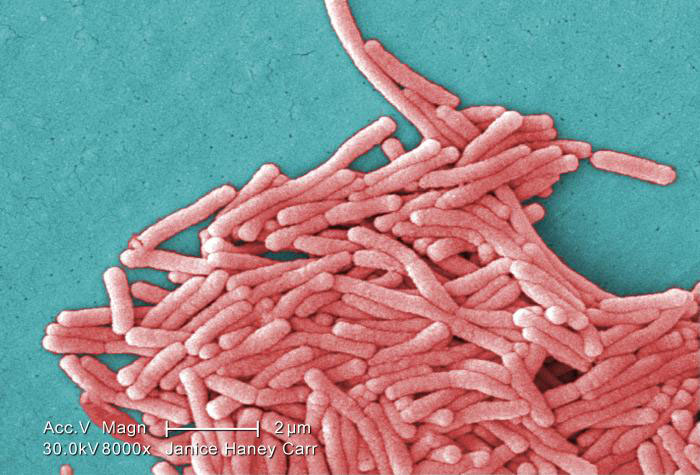Legionella is a disease found in the mist of water and moist soil. Found in hot tubs, hot water tanks, and air conditioning cooling towers. It cannot grow in car air conditioning or home air conditioning. The symptoms of Legionella are a lot like the flu, with a cough that brings up phlegm and sometimes blood, fever, loss of appetite, tiredness, headache, muscle aches, and occasionally diarrhea. Symptoms can start from 2-14 days after exposure.
Pontiac fever is caused by the same bacteria as Legionella disease, but it isn't as bad and can be taken care of at home with a little bed rest, while Legionella is treated by antibiotics. Most people who do get Legionella have to go to the hospital, and 1 in 10 people who get it die. Together, both are collectively called legionellosis. It is not a contagious disease and cannot be spread from person to person.
About 6,000 cases of Legionella are reported each year in the US.
Legionella grows in unkempt hot tubs, large plumbing systems, decorative fountains, and swimming pools. Hot water should be kept above 120 degrees.
Legionella is diagnosed using a urine test and an x-ray. It's incredibly hard to separate Legionella/Pontiac fever from bacterial pneumonia and influenza, because of their similarities to it.
Legionella is called Legionella because of an outbreak in Philidelphia in 1976 during a legionary's convention. Before then, it wasn't considered a condition that could be diagnosed. Many of the attendees of this convention were elderly, leading to 34 deaths.

5 stars
ReplyDeletenever knew that
ReplyDelete